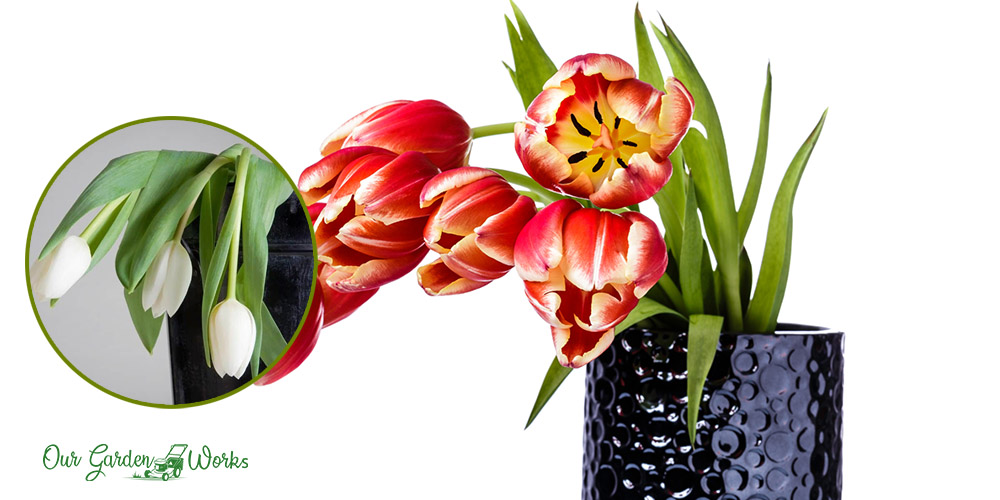Tulips drooping either on their vase or in their pot is a sad sight to see. If you’re wondering why do tulips droop, it’s usually for several reasons like plant stress and environmental changes.
The good thing is with a few tweaks on watering, sun exposure, and pest control, these cup-like flowers will perk up again.
In this post, we will share how to treat drooping tulips in vases and soil based on what’s causing them. We will also share some tips on how to keep their vigor for a long time.
Why do tulips droop?- 5 top reasons
More than plant damage, plant stress is usually the root cause of drooping plants. There are a lot of possible causes of plant stress but the particular ones that result in drooping tulips are as follows:
Dehydration
Tulips are known to be drought-resistant and can easily rot with excessive watering. With sporadic rainfall throughout their growing season, tulips rarely need to be watered since they are prone to bulb and root rot like other bulbs.
In the absence of rain, in-ground tulips need less than an inch of water. Potted tulips will require more water since pots drain faster. With the excessive precaution to prevent rotting, some gardeners give them inadequate water leading to dehydration.
Dehydrated tulips have no obvious signs at first. However, they will start to look limp and droopy. Severe drought stress will lead to the yellowing of leaves.
Overwatering
Plants in the bulb family hate excessive watering because they are prone to rotting. There are 3 reasons why tulips are overwatered. These include:
(1) Consecutive rainfalls: Fields of tulips are more prone to overwatering issues when the weather becomes unpredictable.
Consecutive heavy rains and storms not only cause droopy tulips but rotten and moldy bulbs, regardless if the soil is well-draining. Most gardeners would rather have snow than a continuous downpour of heavy rain in fall and spring.
(2) Excessive watering: Excessive watering is the worst enemy of tulips. Since they are bulbs, they are very sensitive to excessive water in the soil and are more prone to rotting.
As soon as the roots and the bulb are rotting, they can no longer absorb nutrients from the soil leading to nutrient deficiency and plant stress.
(3) Watering tulips during dormancy: Watering tulips at the wrong time can also cause them to rot and show signs of stress.
Tulips are preparing for dormancy and stop absorbing moisture and nutrients as soon as the weather changes in early summer. Watering them during the dormancy stage will only lead to root or bulb rot.
Lack of sun
As heliotropic plants like sunflowers, well-watered and healthy tulips perk up with a beam of light during the day and close at night.
They may be heat-sensitive but they still need 6 hours of sun every day to produce beautiful blooms. Even if they are well-hydrated, they will still droop if they don’t meet their daily need for full sunlight.
Plant health declines due to pests
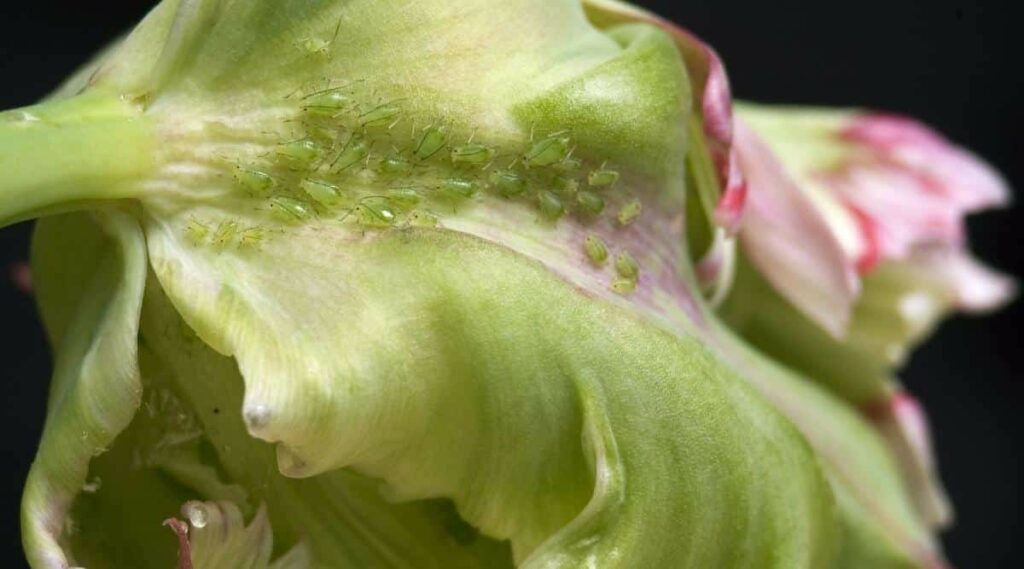
Sometimes drooping tulips are already an effect of an underlying plant problem like fungal disease or pest infestation. Extensive damage and dehydration from these conditions weaken their health, causing limp stems, leaves, and flowers.
The common pests in tulips that can dehydrate the stems and make them droopy are as follows:
(1) Tulips aphids: Aphids are common garden pests but there’s a specific type of aphids that target tulips. They can feed on almost all the parts of tulips from their bulbs to their flowers.
They are also notorious pests on other bulbs and are known for various names, such as:
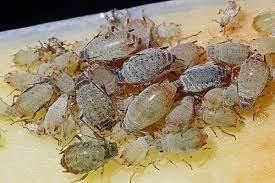
- Tulip bulb aphids.
- Root bulb aphids.
- Iris bulb aphids.
Aphid-infested bulbs will develop disfigured blooms and often have stunted growth. When tulips get infested when established, they often show signs of stress like drooping and damaged leaves and blooms.
Sadly, these insects are also carriers of certain tulip viruses like the narcissus yellow streak virus.
(2) Bulb fly larvae: Bulb fly larvae are soil pests that burrow in the soil targeting tulip bulbs. They often eat bulbs from the inside out, which can slowly kill developed tulips. They overwinter in the soil and can affect other plants in the bulb family.
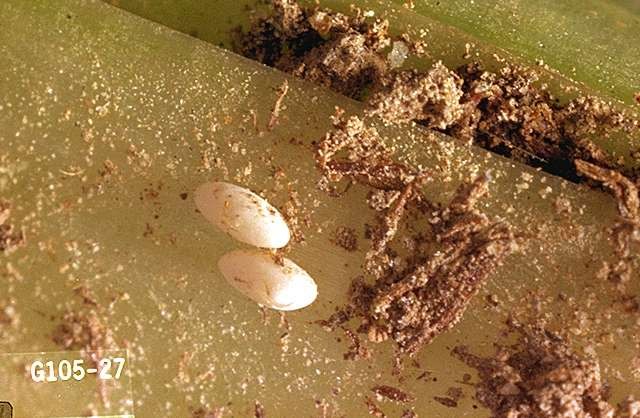
When the larvae mature, they develop into bulb flies, which are no longer detrimental to tulips. However, they will be responsible for laying eggs in the soil and repeating the whole damaging cycle.
Fungal diseases are silent killers of tulips. They sneakily kill plants by invading their internal health system which weakens their stem that leads to drooping or wilt. The notorious fungal diseases in tulips are as follows:
(3) Botrytis blight or tulip fire: This fungal disease particularly attacks tulips. It is soil-borne which makes succeeding tulip plants get worse effects than the previous one. It usually occurs when tulips experience frost injury.
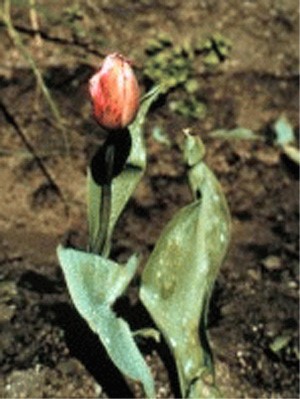
If it is left untreated, the tulips will fail to produce blooms for the season. It manifests in your tulips through the following signs:
- Stunted shoots with twisted or twirly leaves that have white patches.
- Gray mold developing on drooping leaves.
- Spotted flower buds.
- Droopy stems collapsing.
(4) Tulip Fusarium basal rot: This fungal disease is caused by fusarium oxysporum f. sp. tulipae.
It is not as common as tulip fire and only affects a few varieties of tulips. It usually manifests on bulbs in storage and shows severe symptoms when the weather gets a little bit warm or 61℉ and above.
Tulip fusarium basal rot is a soil-borne disease that starts to attack bulbs by penetrating the bulbs and infecting the basal plate of the bulb. Once successful, the bacteria will start to manifest on the outer scale or layer of the new bulb.
Here are some signs of this disease:
- Droopy and wilting leaves.
- Red leaves.
- Bulb and root rot regardless of proper watering.
- Spots on the top part of the bulb.
- Whitish and pinkish growth on infected bulbs.
- Shoots that die before flowering.
Temperature and humidity fluctuations
Tulips are easy to grow but are quite sensitive to fickle weather. Extreme cold and sudden increases in temperature can stress them out, which leads to droopy leaves and stems.
Tulips grown in greenhouses may droop and drop their buds if the humidity fluctuates or go beyond 65% to 85%.
Warm winters can also greatly affect developing tulips so make sure that the temperature and humidity stays in the range that they handle. Otherwise, they will show severe signs of stress like:
- Detaching leaves.
- Bud drop.
- Stunted growth
How To Treat Drooping Planted Tulips
Handling tulips takes a different kind of challenge for growers due to their temperature and humidity sensitivity.
As professional tulip bulb suppliers say, the quality of tulip flowers highly depends on the temperature and the length of the bulb cooling period.
Once those conditions are met based on the tulip variety, some lapses in tulip care and maintenance become the next challenge.
Here are some steps that you should observe and maintain when your healthy tulips start to droop and show signs of stress.
#1 Increase watering for dehydrated tulips
Soil composition is one of the toughest parts of growing tulips. When growers can’t seem to make it right, they often find hydroponic growing a better alternative for their tulips.
However, not everyone has the resources to jump into hydroponic gardening. Also, sometimes a few tweaks on the soil composition can end up giving you the healthiest tulips.
Increase your watering routine for tulips in pots with an inch of water every week and make sure that the soil is not too draining or compacted.
They prefer sandy soil with a lot of organic material and less peat moss. The soil pH level should also be around 6.0 to 6.5 for optimal nutrient absorption of the roots.
#2 Decrease watering during the rainy season
Some gardeners rarely water their tulips because their plants receive an ample amount of rainfall every week.
If there’s a rain forecast for the upcoming week, do not water your outdoor tulips and let nature do it for you. If there’s no rain expected, you may water them with 17 mm of water or less.
Potted tulips, on the other hand, must be watered every week with an inch of water. If you’ve been experiencing bulb or root rot, observe how the soil drains from the pot.

The water should be reaching the bottom of the pot after a few minutes. The topsoil should be damp and not soggy.
If they do get soggy, you must amend the soil with more draining materials like sand and less peat-based materials. Indoor tulips should also receive water in the morning to prevent fungal growth.
The rule of thumb is to check the soil moisture level first before watering. If it’s damp, then delay watering for the next week. They are particularly thirsty during spring and fall when they prepare to develop blooms.
So, during the time between those seasons, try to add minimal water, especially when the blooms start to emerge.
#3 Let them get some sunshine
Tulips need at least 6 hours of direct sun in cool temperatures. They may also do well in partial shade, especially those varieties with white or pale colors.
Planting them under deciduous trees is one of the best spots since trees have no leaves in spring or fall and provide shade in summer.
If you are growing tulips in US Hardiness Zones 7 and 8, you must place the tulips in areas where they can bask in the morning and partial shade in the afternoon. The sun in these areas is particularly warmer which can stress the tulips and cause drooping.
#4 Protect them from pests and diseases
Tulips infested with tulip aphids must be wiped with soapy water or neem oil. Since splashes of water are not ideal for tulips, you can also use insecticides that contain pyrethroid or imidacloprid to manage a heavy infestation.
Here are some of the options that you can try:
- Safer Insect Killing Soap Concentrate.
- Bonide CAPTAIN JACK’S Neem Oil Ready-To-Use 3 in 1 Insecticide.
- Bonide Systemic HousePlant Insect Control Granules
Fungal diseases in tulips can last in the plant bed for a very long time. Most of the pathogens are soil-borne and overwinters in the soil. So, there should be a three-year interval before planting tulips if you have infected bulbs.
Sadly, it can be hard to save tulips once they are infected. The best thing that you can do is prevent planting infected bulbs through strict bulb inspection. Preventive fungicide sprays are also helpful, especially for established tulips.
Here are some fungicides recommended by experts to prevent tulip fusarium basal rot and other diseases:
Additionally, here are some of the things that you should observe in buying bulbs:
- Check for any spots and blemishes on the bulbs when buying them in the nursery. You should also choose a trustworthy nursery where you can buy quality tulip bulbs.
- Dig the bulbs 3 weeks after the blooms drop and store them in a well-ventilated box at cool temperatures starting from 77°F to 81°F until November. Then, move them to a cooler location at 63°F for extended storage.
- Keep both tulips and their bulbs in a well-ventilated location and temperature-controlled environment. Always remember that their quality depends on their cooling period and the overall health of the bulb.
- Avoid wounding the tulip bulbs because they get infected faster than the intact ones.
- Destroy infected bulbs and make sure to get rid of leaves and flowers before storage.
#5 Manage indoor temperature and humidity or bring them indoors
Tulips are very sensitive to fluctuating temperatures. It is the reason why most tulip growers have greenhouses to control their growing environment, especially in areas with fickle weather conditions.
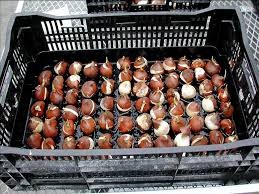
As a tulip grower, here are some of the temperature data that you must consider when growing tulips:
- From the bed to storage: 77°F-80°F (25℃ to 27℃).
- Dormancy period: 62°F-68°F (17℃ to 20℃).
- Cooling period: 41°F-48°F (5℃ or 9℃).
The ideal humidity levels for growing tulips are 65% to 85%. Exceeding those values can lead to plant stress which shows in droopy and dropping leaves.
Here are some tips and pointers for managing the humidity and temperature in tulip greenhouse and bulb storage areas:
(1) Daily monitor the humidity level in your greenhouse using a digital hygrometer. The ideal humidity levels for tulips are 65% to 85%. During the winter season, humidity also changes depending on what you have in your region:
- Warm winters: High humidity.
- Cold winters: Low humidity.
(2) As soon as your tulip bulbs are delivered to your doorstep, the bulbs will need a cooling period for a couple of months. They are stored in two different temperature levels:
- 48°F: for planted bulbs in the soil.
- 41°F: when bulbs are stored in boxes (3 months).
(3) Heaters are not recommended by experts to warm up cold greenhouses. They tend to create a big shift in humidity levels when switched on and switched off, causing fluctuations in humidity levels that affect tulips.
(4) When there’s high temperature in the greenhouse or indoors, it will induce premature growth that produces poor-quality blooms. Tulips are cold-loving because with lower temperatures they tend to have slower growth but better quality blooms.
So, if you want better blooms, let the bulbs take the time they need to give you the best blooms you’ll ever have in your garden.
(5) The cooling period of tulip bulbs affects the quality of the blooms they produce. Longer cooling periods lead to faster growth with smaller bulbs and long stems. On the other hand, a shorter cooling period gives slower growth with big buds and shorter stems.
(6) When planting the bulbs, the ideal temperature is 48°F. Then, it will take around 2 to 3 weeks for the bulbs to develop roots.
Pro Tip: If the bulbs are stored in 41°F storage, you may remove the outer skin for a faster-rooting process. Just make sure to avoid wounding the bulbs to prevent the development of fungal disease.
How to treat drooping cut tulips

If you only have cut tulips that droop overnight, the solution can be quite simple. Check out the following tips that tulip lovers do to keep their cut tulips perk up in the vase:
- Water the cut tulips and keep them away from direct sunlight because they will start to seed and fade.
- Always give them cool freshwater and expose more surface of the stem to water through a diagonal cut in the stem.
- Trim the stem often until they fade.
Final Thoughts
We hope that this post helped you find out why do tulips droop. As a gardener, it’s good that you notice these subtle signs of stress that your tulips give you.
Immediate treatment and prevention are always better than cure. Tulips can be sensitive but once you master their behavior, taking care of them would just be bliss.
Let us know in the comments how your tulips cope with plant stress and which method works best for them.
Also, please share this post with your friends who love growing unique flowers like tulips.
